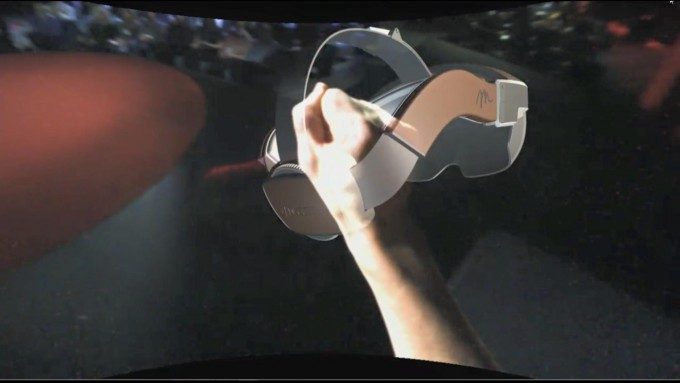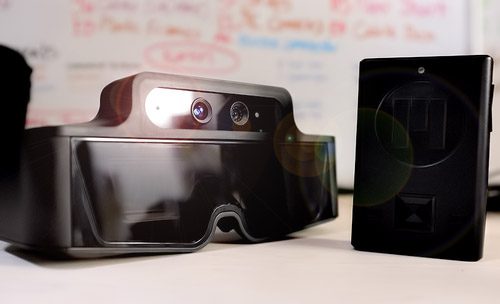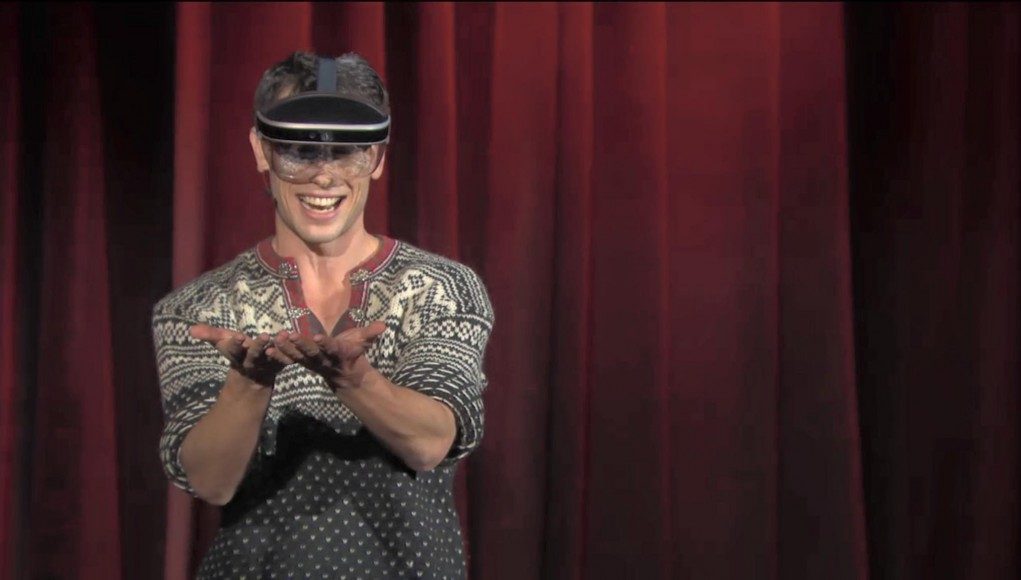Meta has remained relatively silent about the future of their hardware after raising a $23 million Series A early last year. But today at TED 2016 the company showed what they’ve been doing with the cash—crafting what appears to be a vastly improved next-generation AR headset.
On stage at TED 2016, Meta CEO Meron Gribetz literally unveiled the Meta 2 AR glasses from beneath a red sheet. Looking quite bulky, and similar to Microsoft’s HoloLens, Gribetz demoed the AR headset live to the audience while promoting a vision of a world free of computer monitors.
“Today’s computers are so amazing that we fail to notice how terrible they really are,” said Gribetz. “The future of computers is not locked inside screens. It is right here, inside of us… You are the OS, you live between windows.”
He showed a number of demos including a ‘holographic’ video call which projected another person into his vision who was even able to hand him an augmented reality model of a brain.

The Meta 2 looks to be a huge improvement over the original Meta 1, which left much to be desired in field of view and performance across the board.

Tech evangelist Robert Scoble, who screencapped some photos of Gribetz on stage (which we borrowed for this story), said Gribetz received a standing ovation after the demonstration. Scoble was one of several influential figures in the tech space to gush about the Meta 2 in a new video from the company last week:
Elsewhere Scoble said the Meta 2 field of view is “much bigger” than HoloLens (one of that product’s frequent critiques).
Meta as a company recently undertook a major rebranding, moving away from the high tech approach (the company often referred to their headset as ‘Space Glasses’) and now into a more consumer friendly angle (now calling it ‘Meta Vision’) with organic cursive logo and large bold serif fonts.

Curiously, this apparently-consumer focused branding doesn’t jive with what Scoble says, which is that the device is most likely to first hit the enterprise sector this year, while consumer adoption more likely “isn’t going to be real for most of us for three to six years. Maybe longer.”
The company has a countdown timer on their site (“The revolution begins in…”) which points to March 2nd, when it seems the company will reveal more details about their new augmented reality headset.










